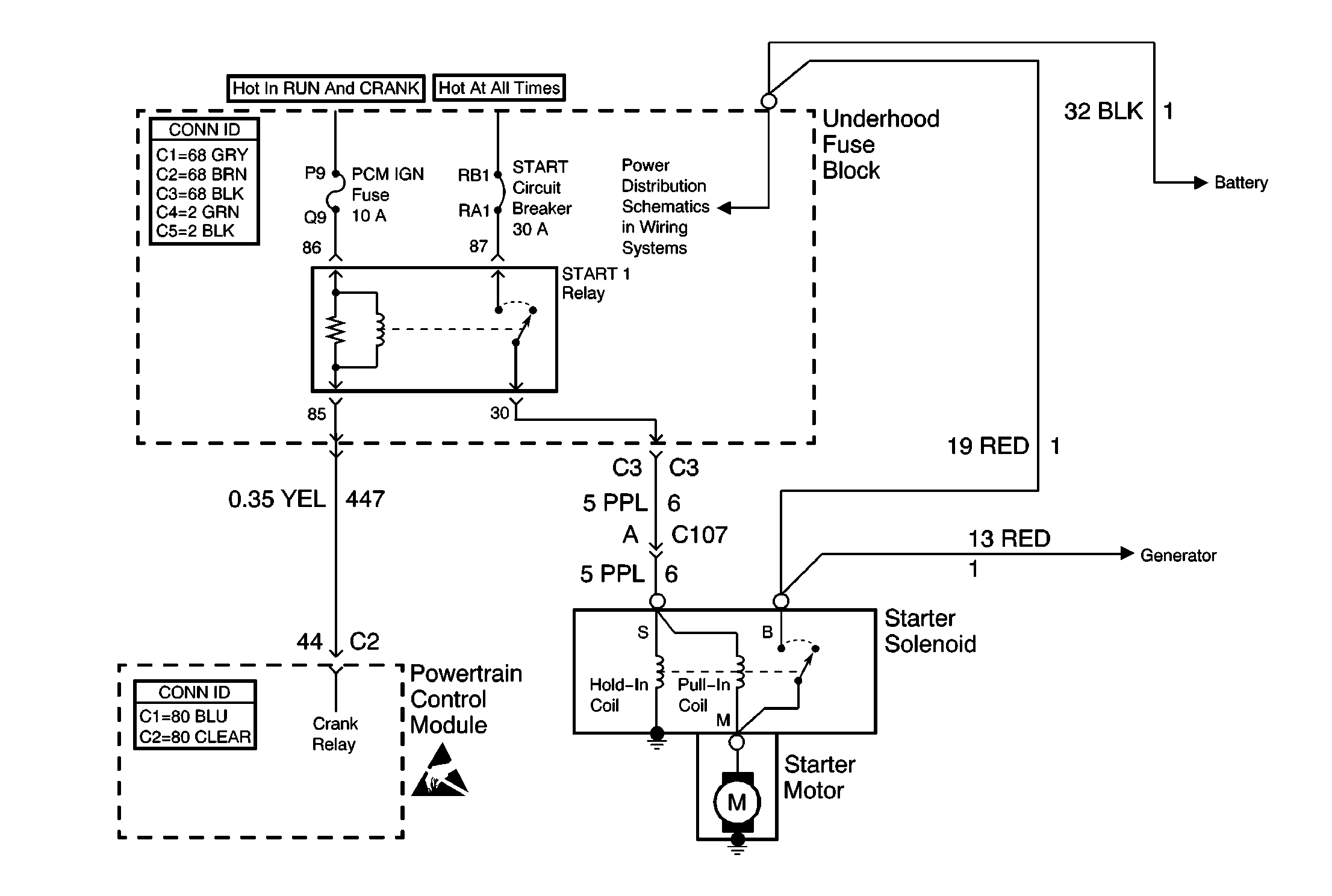
Circuit Description
The PCM uses output driver modules (ODMs) to control many functions of the engine and the transaxle. The ODMs supply the ground path for the PCM controlled device when the PCM commands the device ON. Each ODM is able to control several outputs. Unlike the quad driver modules (QDMs) used in earlier model years, the ODMs are able to diagnose each output circuit. The PCM monitors the ODMs for circuit conditions that are incorrect for the commanded state of the ODM. If the PCM detects an improper circuit condition in the ODM that controls the starter relay, DTC P0615 will set.
Conditions for Running the DTC
The system voltage is between 8-16 volts.
Conditions for Setting the DTC
| • | The PCM detects an improper voltage level on the output circuit that controls the starter relay. |
| • | The condition exists for at least 2 seconds. |
Action Taken When the DTC Sets
| • | The PCM will not illuminate the malfunction indicator lamp (MIL). |
| • | The PCM will store the conditions present when the DTC set as Failure Records data only. |
Conditions for Clearing the MIL/DTC
| • | The history DTC will clear after 40 consecutive warm-up cycles have occurred without a malfunction. |
| • | The DTC can be cleared by using the scan tool Clear DTC Information function. |
Diagnostic Aids
To determine whether an improper voltage level exists on the output circuit, the PCM compares the voltage level to the commanded state. For example, a failure condition exists if the PCM detects a low voltage level when the device is commanded OFF, or a high voltage level when the device is commanded ON.
Ignition system DTCs set with the ignition in the START position if the starter relay or the starter is inoperative. When the PCM enables starter operation, the PCM also initiates the diagnostic test routines for DTCs P0335, P0340, and P0385. If a condition exists which prevents the engine from cranking, the PCM will not receive signal input from the CKP and CMP sensors, and the DTCs will set.
If the condition is intermittent, refer to Intermittent Conditions .
Step | Action | Values | Yes | No | ||||
|---|---|---|---|---|---|---|---|---|
1 | Did you perform the On-Board Diagnostic (OBD) System Check? | -- | ||||||
2 |
Important: If the engine cranks with the ignition OFF, Turn ON the ignition to stop the engine from cranking. After the vehicle stops cranking, remove the starter relay. Does the engine crank with the ignition in the OFF position? | -- | ||||||
3 |
Did you find and correct the condition? | -- | ||||||
4 | Turn ON the ignition, with the engine OFF. Does the engine crank and run with the ignition ON? | -- | ||||||
5 |
Did you find and correct the condition? | -- | ||||||
6 | Inspect the ignition supply fuse. Is the fuse open? | -- | ||||||
7 |
Did you find and correct the condition? | -- | ||||||
8 |
Did you find and correct the condition? | -- | ||||||
9 |
Is the test lamp ON? | -- | ||||||
10 |
Did you find and correct the condition? | -- | ||||||
11 |
Did you find and correct the condition? | -- | ||||||
12 | Replace the starter relay. Refer to Engine Controls Component Views . Is the action complete? | -- | -- | |||||
13 |
Important: The replacement PCM must be programmed. Replace the PCM. Refer to Powertrain Control Module Replacement/Programming . Is the action complete? | -- | -- | |||||
14 |
Does the scan tool indicate DTC P0615 passed? | -- | System OK |
